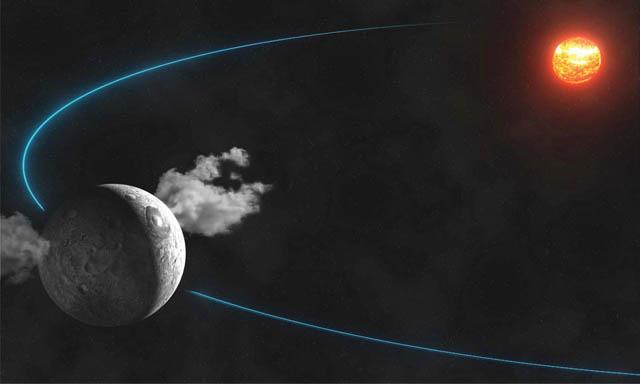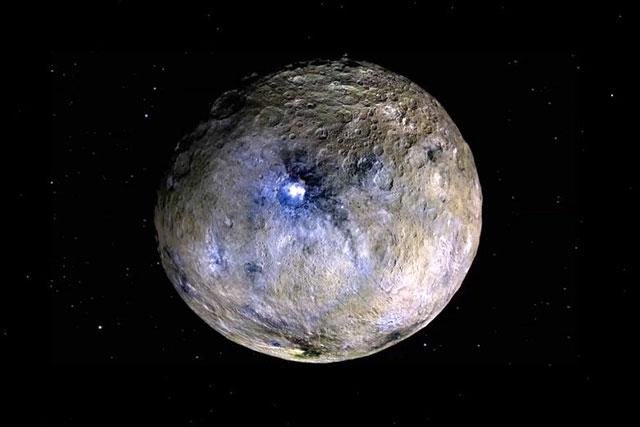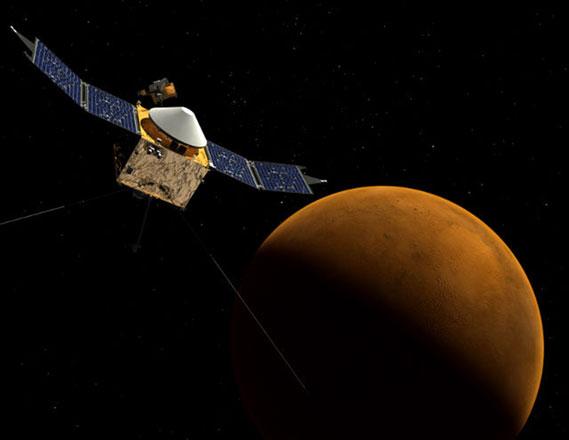You are here
Hello Ceres! NASA spacecraft on first visit to dwarf planet
By AP - Mar 07,2015 - Last updated at Mar 07,2015
LOS ANGELES — A NASA spacecraft flawlessly slipped into orbit around Ceres on Friday in the first visit to a dwarf planet after a nearly eight-year journey.
The Dawn craft will circle the dwarf planet for more than a year, exploring its surface and unraveling its mysteries.
“It went exactly the way we expected. Dawn gently, elegantly slid into Ceres’ gravitational embrace,” said mission chief engineer Marc Rayman at NASA’s Jet Propulsion Laboratory, which manages the $473 million mission.
Ceres is the second and final stop for Dawn, which launched in 2007 on a voyage to the main asteroid belt, a zone between Mars and Jupiter that’s littered with rocky leftovers from the formation of the sun and planets some 4½ billion years ago.
Dawn will spend 16 months photographing the icy surface. It previously spent a year at Vesta exploring the asteroid and sending back stunning close-ups of its lumpy surface before cruising onto the Texas-sized Ceres, the largest object in the asteroid belt.
The 4.8 billion kilometre trip was made possible by Dawn’s ion propulsion engines, which provide gentle yet constant acceleration and are more efficient than conventional thrusters.
As Dawn approached Ceres, it beamed back the best pictures ever taken of the dwarf planet. Some puzzling images revealed a pair of shiny patches inside a crater — signs of possible ice or salt.
Scientists hope to get a better glimpse of the spots when the spacecraft spirals closer to the surface. It’ll also study whether previously spotted plumes of water vapour continue to vent.
“There are a lot of secrets that will be revealed,” said mission scientist Lucy McFadden at NASA’s Goddard Space Flight Centre.
The spacecraft glided into place at 4:39am Friday and flight controllers received confirmation about an hour later. The manoeuvre occurred without a tense moment, unlike other captures that require braking to slow down.
“The real drama is exploring this alien, exotic world,” Rayman said.
Dawn is currently in Ceres’ shadows and won’t take new pictures until it emerges in April, he said.
Discovered in 1801, Ceres — measuring 965 kilometres across — is named after the Roman goddess of agriculture and harvest. It was initially called a planet before it was demoted to an asteroid and later classified as a dwarf planet. Like planets, dwarf planets are spherical in shape, but they share the same celestial neighbourhood with other similar-sized bodies.
With its massive solar wings spread out, Dawn is about the size of a tractor-trailer, measuring 20 metres from tip to tip.
Dawn carries an infrared spectrometer and a gamma ray and neutron detector to study the surface of Ceres from orbit. In the coming months, it will spiral down to within 378 kilometres of Ceres’ surface where it will remain long after the mission is over.
“Every time we get closer, we see more things that make us scratch our heads,” said mission scientist Mark Sykes, who heads the Planetary Science Institute in Arizona.
Dawn almost never made it out to the inner solar system. The mission endured funding-related project cancellations and launch delays before it received the green light to fly.
Dwarf planets lately have become the focus of exploration.
This summer, another NASA spacecraft — New Horizons — is set to make the first visit to Pluto, which was demoted to dwarf planet.
Related Articles
The largest object in the asteroid belt just got more attractive: Scientists have confirmed signs of water on the dwarf planet Ceres, one of the few bodies in the solar system to hold that distinction.
PARIS — The dwarf planet Ceres — long believed to be a barren space rock — is an ocean world with reservoirs of seawater beneath its surface
MIAMI — In the Hollywood movie “The Martian” an American astronaut survives on Mars against all odds, but in reality NASA admits that huge o















